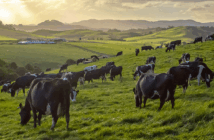
Many of us take for granted being able to choose any food or drink and consume it without a potentially life-threatening reaction but for people living with allergies, this is at the forefront of their minds. Labelling plays a huge part in making sure people know exactly what they are eating.
To help, Food Standards Australia New Zealand announced new requirements for allergen labelling on packaged foods in February 2021, to ensure food allergen declarations are clear and consistent across the board.
The requirements include the declaration of allergen information in a specific format and location on food labels and the use of simple, plain English terms for allergen declarations.
These requirements took immediate effect for all new products and there is a three-year transition period for existing products to comply.
During the transition period, food businesses can comply with either the existing allergen declaration requirements in the code, or the new requirements.
Any food packaged and labelled before the end of the transition period under existing allergen declaration requirements may be sold for up to two years after the end of the transition period.
FSANZ CEO Mark Booth says the changes will help consumers to read and interpret allergen information more quickly and easily.
“This is good news for anyone with a food allergy and will assist people to make informed and safe food choices.”
The main changes are that allergen information is to be declared in a specific format and location on food labels, including an allergy summary statement, and using simple, plain English terms in bold font. This means individual tree nuts will have to be declared, rather than the blanket term ‘tree nuts.’ These are almonds, Brazil nut, cashew, hazelnut, macadamia, pecan, pine nut, pistachio, and walnut. Molluscs have also been added as a specific allergen rather than being list as ‘fish’ as they previously were.
Allergy New Zealand advisor Penny Jorgensen says one of the biggest hurdles for people living with allergies is having to check everything they eat.
“The main issue with food allergy is the risk of a severe reaction. There’s no cure for this condition or treatment so it’s a chronic condition which they must manage all day, every day and any situation that involves food. It’s quite a challenging and daunting condition to have.
“A lot of people with a child diagnosed have had no experience with this before and it’s really difficult and scary. From a parent’s perspective you could be putting your child’s life at risk. For adolescence and adults, it can have a significant limiting effect on their social life and their work life.”
Jorgensen says many people living with allergies choose not to eat out because they feel unsafe eating food that hasn’t been prepared by themselves or a care giver.
Another issue is voluntary Precautionary Allergen Labelling or ‘may contain’ statements she says.
“It’s hard to know if a product that doesn’t have a may contain statement means it doesn’t have any allergens in it or if the manufacturer has chosen not to include it, so it’s really confusing for the consumer.
“We are always saying to consumers ‘check every label every time’, but if you do that every time you go to the supermarket it probably doubles or triples the amount of time it takes to shop.”
Manufacturers can find essential industry guidance on food allergen management, labelling, determining potential allergens in products and advice on what and how these should be declared through the Allergen Bureau and the Voluntary Incidental Trace Allergen Labelling (VITAL) programme.
VITAL is an initiative of the Allergen Bureau which aims to lead the global food industry in best practice allergen management, sharing information to support allergen sensitive consumers to make informed choices.
Manufacturers can also seek out the Codex Alimentarius international food standards, guidelines, and codes of practice which contribute to the quality of international food trade. Codex standards are based on science provided by independent international risk assessment bodies or ad-hoc consultations organised by the Food and Agriculture Organization of the United Nations (FAO) and the World Health Organisation (WHO).
Jorgensen says another issue increasingly cropping up is manufacturers changing the ingredients lists due to supply or delivery issues caused by the pandemic. The flow on effect from this is that consumers who are used to being able to purchase a particular brand because of their allergen requirements can get caught out if they do not read the ingredient list every time, they purchase the product.
“This is a tricky one because technically the label is correct, and the manufacturer has changed the ingredient list on the back, and the allergen declaration if they use these, but they haven’t changed anything on the front of pack. From a consumer perspective, if there are any changes in ingredient formulation and there is now an allergen in it that wasn’t there before, then there needs to be some sort of over stickering on the front. Some manufacturers have done that, and consumers find that very helpful,” she says.




























































































